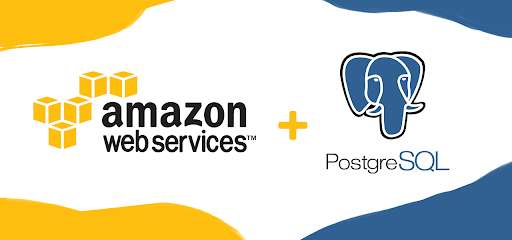
- AWS POSTGRESQL DATABASE HOW TO
- AWS POSTGRESQL DATABASE UPDATE
- AWS POSTGRESQL DATABASE FULL
- AWS POSTGRESQL DATABASE CODE
- AWS POSTGRESQL DATABASE SERIES
AWS POSTGRESQL DATABASE SERIES
Just like eb init, this command will prompt you with a series of questions. Let’s get a test environment set up… Configure EB – Create an EnvironmentĬoming back to the terminal, in your project directory type: For simple Django applications I like to have the development environment on my laptop, then create a test and a production environment on Beanstalk. It is completely up to you how you want to configure/manage these environments. With Elastic Beanstalk, an application can have multiple environments (i.e., development, testing, staging, production).
AWS POSTGRESQL DATABASE CODE
On the page, you should see one application (called image-of-the-day if you’re following along exactly), but no environments.Īn application represents your code application and is what eb init created for us. Inside that directory is a config.yml file, which is a configuration file that is used to define certain parameters for your newly minted Beanstalk application.Īt this point, if you type eb console it will open up your default browser and navigate to the Elastic Beanstalk console. This will allow you to SSH into your EC2 instance later in this tutorial. This keypair will also be uploaded to the EC2 public key for the region you specified in step one.

Next, you need to generate an RSA keypair, which will be added to your ~/.ssh folder. Say yes to setting up SSH for your instances.
AWS POSTGRESQL DATABASE HOW TO
Because you’re basically interacting with the Docker image directly, if you choose this route you would use standard Docker configuration techniques (i.e., a ‘Dockerfile’), and then you don’t have to do much that is AWS Beanstalk specific, as Beanstalk knows how to manage the Docker image for you.įor this article we will focus on the “standard” or “traditional” way of using an EC2 image, so choose the ‘Python 3.4’ option and let’s move on. The Docker image runs 64bit Debian Jessie with Python 3.4, nginx 1.8 and uWSGI 2.0.8.

This gives you an EC2 image running Docker, with a Docker image already setup for you. In other words, with this option Beanstalk will create EC2 images for you, and you can use the ebextension files we will talk about later to customize the EC2 image. This is the “standard” or “traditional” way that Beanstalk works. The front end web server is apache, with mod_wsgi installed. This gives you an EC2 image running 64bit Amazon Linux with Python 3.4 pre-installed. No, only teasing the basic difference is this: Python 3.4 If you’re a hipster, choose the ‘Preconfigured - Docker’ choice, otherwise go with the normal ‘Python 3.4’. You have 2 different options here for Python 3: Then you need to select a platform version. Next, the CLI should automagically detect that you are using Python and just ask for confirmation. (This is probably not a great choice for security reasons, though.) For the specific policies/roles that a user needs in order to create/manage an Elastic Beanstalk application, see the link here. The simplest way to do this is to just add “Administrator Access” to the User. If you do set up a new user you will need to ensure the user has the appropriate permissions. Here, you will most likely want to set up an IAM User. Next, it’s going to ask for your AWS credentials. Check out this map if you’re unsure which to choose.
AWS POSTGRESQL DATABASE UPDATE
if you need to UPDATE the target table, it would be more complex, and to provide some guidance I would need additional details.This will prompt you with a number of questions to help you configure your environment.Ĭhoosing the region closest to your end users will generally provide the best performance. Please notice that his would work if you need to always insert new data. Job 2 removes the temporary file if the write to target DB is successful. Job 2 reads the table A with bookmark enabled and the temporary data set from S3, it makes the join and writes to the target DB
AWS POSTGRESQL DATABASE FULL
Job 1 reads the full of table B (job bookmark disabled) and writes it to a temporary file on S3. If you need to join the incremental data from Table A with the whole of table B, you would need to break the job and create a workflow. If the two tables have different update schedules on the source it may happen that the join results in an empty datasets and no additional data would be inserted in the target DB. Job bookmark if enabled will apply to all table read in the job and if you are using a jdbc connection will use by default the primary key to check for new data, unless you specify a different key.



 0 kommentar(er)
0 kommentar(er)
